Review: 2010 Kia Forte SX
If you’re a driving enthusiast with a family and a sub-$20k budget, then a four-door sport compact tends to be the way to go. Unfortunately, you don’t have as many choices lately. Nissan’s, Honda’s, Suzuki’s, and VW’s suitably sporting offerings are priced out of reach. Mitsubishi is barely hanging on with the Lancer GTS. Toyota offers the Corolla XRS, but few enthusiasts take it seriously. Only the Mazda3 sells well in this segment, but the new styling isn’t for everyone. Perhaps the Kia Forte SX? The lone Korean offers the most horsepower for the lowest price, and for 2011 will be available in practical hatchback form. But is it truly a contender?
If the Forte sedan looked nearly as good as the Koup, it would be the most stylish car in the segment. But it doesn’t. With a higher roofline without the Koup’s flared wheel openings, the boxier sedan borders on plain. With athletically-proportioned rear quarters—it’s 7.4 inches shorter than the sedan, all of it taken out of the rear overhang—the new hatch looks much better, if still not as sleek as the Koup.
Inside, a leather-wrapped steering wheel, metal pedals, and red stitching attempt a sporty ambiance, but can’t quite pull it off. The plastics of the center console try too hard to seem upscale when they’re clearly not. Nothing seems dreadfully cheap, though the area around the shifter comes close. Someone inside Kia must have agreed with this assessment, because the area around the shifter has been redesigned for the 2011s—after just a single model year. The high driving position pays dividends in visibility, but similarly suggests economy. Both the Mazda and Mitsubishi seem sportier and more substantial from the driver’s seat.
The driver’s seat itself is too little removed from its econocar roots. Red stitching and “sport fabric” aren’t enough. The more aggressively bolstered buckets from the Koup would be welcome. The back seat is better, with a high cushion providing unusually good thigh support. The trunk, at 14.7 cubes, is spacious. With its bobbed tail, the hatch won’t hold as much without the seat folded.
On the move, the Forte SX feels quick. Credit the 2.4-liter’s 173 horsepower, the short initial gearing of the six-speed manual, and a curb weight about 100 pounds less than the Mazda’s and 200 pounds less than the Mitsubishi’s—Kias aren’t pigs anymore. The 2.4 is louder and less refined than the engines in the Mazda and Mitsubishi, but not by too large a margin. The direct-injected 200-horsepower variant from the Hyundai Sonata would be a sweet upgrade. The new 274-horsepower turbocharged 2.0-liter would provide competition for the MazdaSpeed3, but would of course bump the price well over $20,000.
Shift feel tends to be a Hyundai-Kia weakness, and the Forte is no exception. Shift throws are long, and you’re clearly manipulating cables. Not awful, but also not a pleasure. The clutch takes up abruptly close the floor, and the engine stalls very easily, suggesting (with the willingness of the engine to rev) a relatively light flywheel.
The steering and handling are the best yet in a Korean compact, but still have a way to go to match the leaders. The steering is quick off center, and heavier than in the Mazda and Mitsubishi, but isn’t the most precise and doesn’t communicate the subtleties of the road surface. The 215/45HR17 Goodyear Eagle LS treads probably don’t help here. Body lean and understeer are restrained, but the suspension design (including a torsion beam in back) and tuning are less sophisticated than the Mazda’s and Mitsubishi’s. The ride can be choppy, especially on expansion joints, and the Forte feels less solid and composed over bumps. Though there are no glaring flaws, and the Forte is considerably more fun to drive than a Corolla or Cruze (which lacks a performance variant), that unspecifiable magic that melds driver and car proves elusive.
And the price? The 2010 Forte SX sedan lists for $18,190, which is about $1,500 less than the equivalent Mazda and Mitsubishi. So while definitely a good value, it’s not a steal. For 2011, the six-speed manual is no longer available in the sedan (if you want this combination, better snatch up the one I drove), but is standard in the new hatch. Compare 2011 model year hatchbacks—the Kia starts at $19,090—and the price difference remains about the same.
Kia hasn’t been in the sport compact game nearly as long as Mazda and Mitsubishi. The latter, after all, is currently working on the eleventh generation of the Evo, from which goodness trickles down to the Lancer. So it’s to be expected that the Forte can’t match the leaders in driving feel, even if it beats them on the spec sheet. There’s magic involved, and this magic requires years of practice. The Koreans have clearly started to put in the effort—the Forte SX might not be the best car, but it’s in the ballpark. If they keep at it, and the second-year tweaking suggests they will, they’ll get there.
The vehicle for this review was provided by Wayne Stempel of Summit Place Kia of Waterford, MI. Wayne can be reached at (866) 770-9552.
Michael Karesh owns and operates TrueDelta, an online source of vehicle pricing and reliability data
Michael Karesh lives in West Bloomfield, Michigan, with his wife and three children. In 2003 he received a Ph.D. from the University of Chicago. While in Chicago he worked at the National Opinion Research Center, a leader in the field of survey research. For his doctoral thesis, he spent a year-and-a-half inside an automaker studying how and how well it understood consumers when developing new products. While pursuing the degree he taught consumer behavior and product development at Oakland University. Since 1999, he has contributed auto reviews to Epinions, where he is currently one of two people in charge of the autos section. Since earning the degree he has continued to care for his children (school, gymnastics, tae-kwan-do...) and write reviews for Epinions and, more recently, The Truth About Cars while developing TrueDelta, a vehicle reliability and price comparison site.
More by Michael Karesh
Latest Car Reviews
Read moreLatest Product Reviews
Read moreRecent Comments
- MaintenanceCosts If you want a car in this category, you want interior space, comfort, predictability, and low running costs.That probably favors the RAV4 Hybrid, with second place going to the CR-V hybrid. The CR-V is a nicer-looking and nicer-feeling product, but it just has not proved quite as low-drama as the Toyota.The RAV4 Prime is a compelling car but it's extremely expensive and still hard to get, and the regular hybrids are a better value.There's no reason to choose the non-hybrid of either one. You get higher running costs and less refinement for no benefit.
- Aaron Id lean towards the rav4. The crv1.5 turbo has had issues. The rav 4 has both port and direct injection, no cvt. Also the Toyota hybrid systems have been super stout
- Jeff My wife owned a 2013 AWD CRV since new it has been trouble free but I am not a fan of turbos so I would lean toward the Rav 4. If I were getting a hybrid it definitely would be a Rav 4 with Toyota's hybrid system being the best. Honestly you could not go wrong with either a CRV or a Rav 4. My third choice would be a Mazda.
- 3-On-The-Tree We like our 2021 Rav4 non hybrid.
- Vatchy FSD never has been so what is with the hype about robo-taxis? You would need the first in order for the second to work.




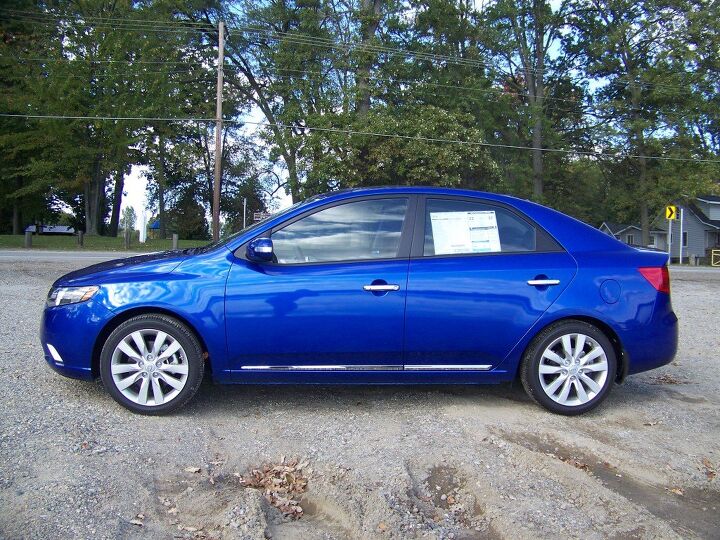























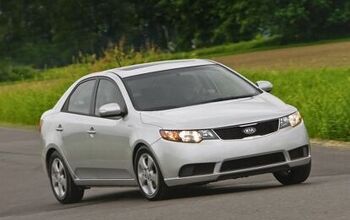
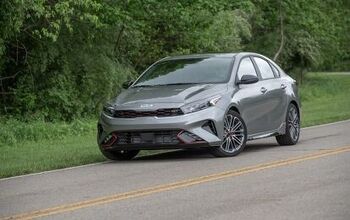
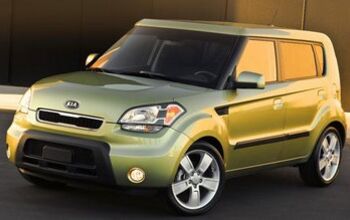
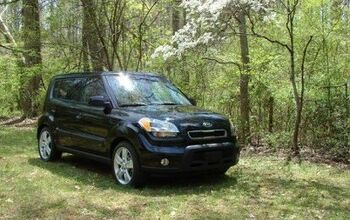
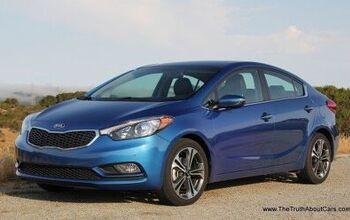










Comments
Join the conversation
@Michael - Does this have the same pain-in-the-ass fuel cutoff on the 1->2 and 2->3 shift that the rest of the Hyundai six-speeds (Genesis) suffer from, that causes power to momentarily die off under hard acceleration?
I like to think of this car as the Cruze killer. 173 vs 138 HP with similar mileage figures. Fully loaded SX varient with transaction prices around where the Cruze LS automatic starts and that doesn't even include cruise control because you can't get that on base LS varients. Both have bland exterior sheetmetal but the Kia somehow looks a little smarter, especially without that stupid black C-pilar blank out on the Cruze. The Cruze interior looks a bit more upscale but the Kia manages to feel a bit roomier with a bit more back seat knee room and front leg stretch out space. Both cars come with ABS/stability control and plenty of safety features and both cars have telescoping wheels. The Kia also gets bluetooth and USB port as std vs extra cost on the Cruze. The Cruze doesn't come as a coupe or hatch and doesn't come with the frugal 14K package without A/C and power windows/locks for the college student looking for a new cheap car with a genrous warranty. Worse, the top line Cruze LTZ and loaded 2LT models with a few options can climb up to 24-25K which is where a Sonata turbo strarts out with 274 HP! Yikes I agree that the Cruze will soon see discounts on the hoods of those higher end models.